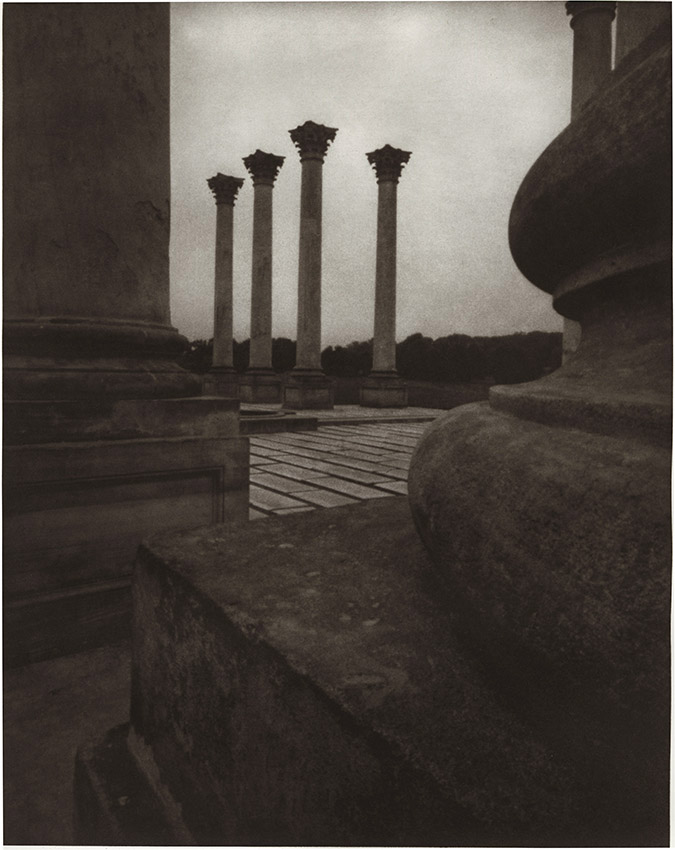To make a photogravure, a photograph is engraved on a copper plate, which is then inked. A moistened sheet of paper is placed on the plate. Then plate and paper pass through an engraving press. It was a slow, hand-made process.
Several early photographers invented versions of the process, including William Henry Talbot and Charles Negre. It is often know as heliogravure, particularly in France.
This technique was widely used at the end of the 19th century by primarily Pictorialist photographers who wanted to raise the status of photography to the level of that of the fine arts. Then in the early 20th century, photoengraving was popularized by Alfred Stieglitz, who included extremely elaborate photoengravings in his journal, Camera Work .
Unlike photomechanical processes such as half-tone(halftone) which rely on an accumulation of dots to reproduce an image, photoengraving makes it possible to produce an image with continuous ranges of colors and subtle nuances.
Color effects are achieved through the use of tinted inks.
It is not to be confused with rotogravure or other high speed printing processes.
Exhibited and Sold By
Contemporary Works / Vintage Works, Ltd.
258 Inverness Circle
Chalfont, Pennsylvania 18914 USA
Contact Alex Novak and Marthe Smith
Email info@vintageworks.net
Phone +1-215-518-6962
Call for an Appointment














Share This